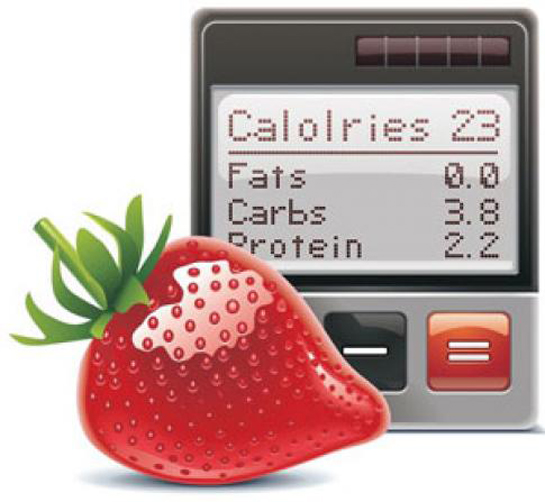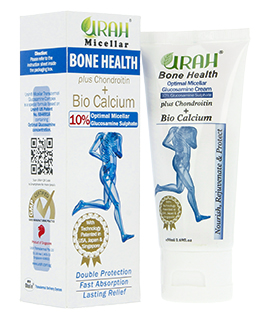
Determining your body’s total dietary energy needs takes a bit of math — so grab a calculator. This method of determining your calorie needs is easier and almost as accurate as checking into a research lab and submitting yourself to scientific scrutiny by a white-coated nerd with a clipboard and a stopwatch.
Estimate your basic energy needs.
Multiply your current weight (in pounds) by 10 if you’re a woman or 11 if you’re a man. Or use the formula in table below, which factors in your age in addition to your sex.
For example: Sue is a 45-year-old female who weighs 155 pounds. She calculates her BMR like this:
155 pounds ÷ 2.2 = 70.45 kilograms
70.45 kilograms x 8.7 = 612.92 calories
612.92 calories + 829 calories = 1,441.92 calories
So Sue’s BMR — or the number of calories that her body needs at complete rest to function — is roughly 1,442 calories.
If you figure Sue’s BMR by using the shortcut method, her needs are about 1,550 (155 pounds x 10 = 1,550) — a bit higher than the full calculation, but still in the same ballpark.
| Age | Use This Equation to Calculate Your BMR |
|---|---|
| * | Men |
| 18 to 30 | [15.3 x weight (in kilograms)] + 679 |
| 30 to 60 | [11.6 x weight (in kilograms)] + 879 |
| Older than 60 | [13.5 x weight (in kilograms)] + 487 |
| * | Women |
| 18 to 30 | [14.7 x weight (in kilograms)] + 496 |
| 30 to 60 | [8.7 x weight (in kilograms)] + 829 |
| Older than 60 | [10.5 x weight (in kilograms)] + 596 |
Determine your activity factor value.
How active are you? Find the description in the following table that best matches your lifestyle. If you have a desk job but fit in a dose of daily exercise (at least 30 minutes), consider yourself in the light or moderate category.
| If, Throughout Most of Your Day, Your Activities Include | Your Activity Level Is | Your Activity Factor Is |
|---|---|---|
| Sitting or standing; driving; painting; doing laboratory work; sewing,ironing, or cooking; playing cards or a musical instrument; sleeping or lying down; reading; typing | Very light | 0.2 |
| Doing garage, electrical, carpentry, or restaurant work; house-cleaning; caring for children; playing golf; sailing; light exercise, such as walking, for no more than 2 miles | Light | 0.3 |
| Heavy gardening or housework, cycling, playing tennis, skiing, or dancing; very little sitting | Moderate | 0.4 |
| Heavy manual labor such as construction work or digging; playing sports such as basketball, football, or soccer; climbing | Heavy | 0.5 |
Multiply your basic energy needs by the activity factor value that you determined in Step
Using Sue as an example, she multiplies her BMR of 1,442 by 0.3 because her activity level is light — running around after her kids, taking care of the house, and fitting in a 2-mile morning walk with her neighbors every other day. Sue needs 432.6 calories for her activity level.
1,442 x 0.3 = 432.6 calories
Determine the number of calories that you need for digestion and absorption of nutrients.
Eating food actually burns calories. Digesting food and absorbing nutrients uses about 10 percent of your daily energy needs. Add together your BMR and activity calories and then multiply the total by 10 percent.
The calculation for Sue’s calorie needs for digestion and absorption looks like this:
1,442 calories + 432.6 calories = 1874.6 x 10% = 187.5 calories
Total your calorie needs.
Add together your BMR, activity, and digestion/absorption calorie needs to get your total calorie needs — that is, the number of calories that you need to maintain your current weight.
To maintain her current weight of 155 pounds, Sue calculates her total calorie needs like this:
1,442 calories + 432.6 calories + 187.5 calories = 2,062 total calories
Source: http://www.dummies.com/how-to/content/how-to-determine-your-calorie-needs.html
Click here to Check How to Use Urah Products
Click here to Check the Quality of your Glucosamine Product before use

2026 © URAH Transdermal Pte Ltd. ALL Rights Reserved. Urah Privacy Policy | Terms of Service | Return Policy
Disclaimer: All contents on this website are provided for general information only, and should not be treated as a substitute for the medical advice of your Physician or any other health care professional. Urah is not responsible or liable for any diagnosis made by any user based on the content of this website. Always consult your own Physician if you're in any way concerned about your health. Urah Micellar Transdermal Cream formulae are not patented or under any patent rights.
No comment yet